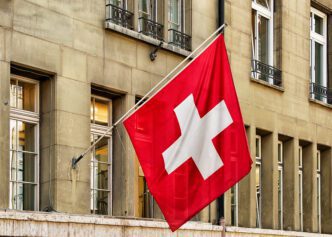Executive Summary
The Story So Far
Why This Matters
Who Thinks What?
Tariffs initiated by President Donald Trump are projected to significantly impact consumer prices, with economists anticipating a more pronounced effect on the upcoming holiday shopping season. While companies have largely absorbed these costs earlier in the year through inventory build-up and compressed profit margins, analysts now expect these duties will increasingly pass through to consumers, contributing to sustained inflation.
Economic Projections and Federal Reserve Concerns
Bank of America (BofA) economists anticipate that tariffs will add approximately half a percentage point to the core Personal Consumption Expenditures (PCE) measure, which the Federal Reserve utilizes to assess inflation. According to BofA estimates, this would place the September inflation rate at 2.9% with tariffs, compared to an estimated 2.4% without them. These figures align with similar observations recently cited by Fed Chair Jerome Powell.
The Federal Reserve aims to maintain core inflation, excluding food and energy, at 2%, a target it has exceeded since March 2021. The difference of half a percentage point is critical for the central bank’s policy decisions. This persistent inflationary pressure has led to differing opinions within the Fed, with two regional presidents dissenting from a recent decision to lower the key interest rate.
Consumer Impact at the Register
Consumers are estimated to bear 50% to 70% of the total tariff costs, with businesses absorbing the remainder. This burden translates to higher prices for various goods, including coffee, furniture, and clothing, which saw a 0.7% price jump in September, according to the Bureau of Labor Statistics.
Even for items that constitute minor components of price indexes, their impact on consumer perception can be substantial. TD Cowen analysts note that price increases in frequently purchased goods, like eggs or artificial Christmas trees, can create a “constant, tangible feedback loop” that shapes consumer confidence and perceptions of inflation, potentially leading to a self-reinforcing cycle of rising prices.
Holiday Season Outlook
Looking ahead, LendingTree estimates that if current duties were applied to the 2024 holiday season, shoppers would have faced an additional $40.6 billion in costs, averaging $132 per shopper. Their Budget Lab further projects that approximately 70.5% of new tariffs could be passed on to consumers by June 2025.
Matt Schultz, LendingTree’s chief consumer finance analyst, highlighted the potential strain on household budgets, stating that many Americans might need to rely on credit cards and personal loans to cover gift-buying expenses under such conditions. This underscores the significant financial implications tariffs could have on consumer spending and credit usage.








